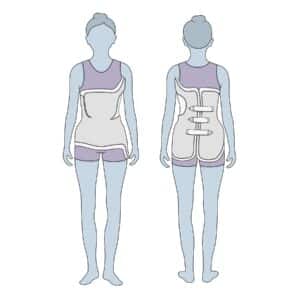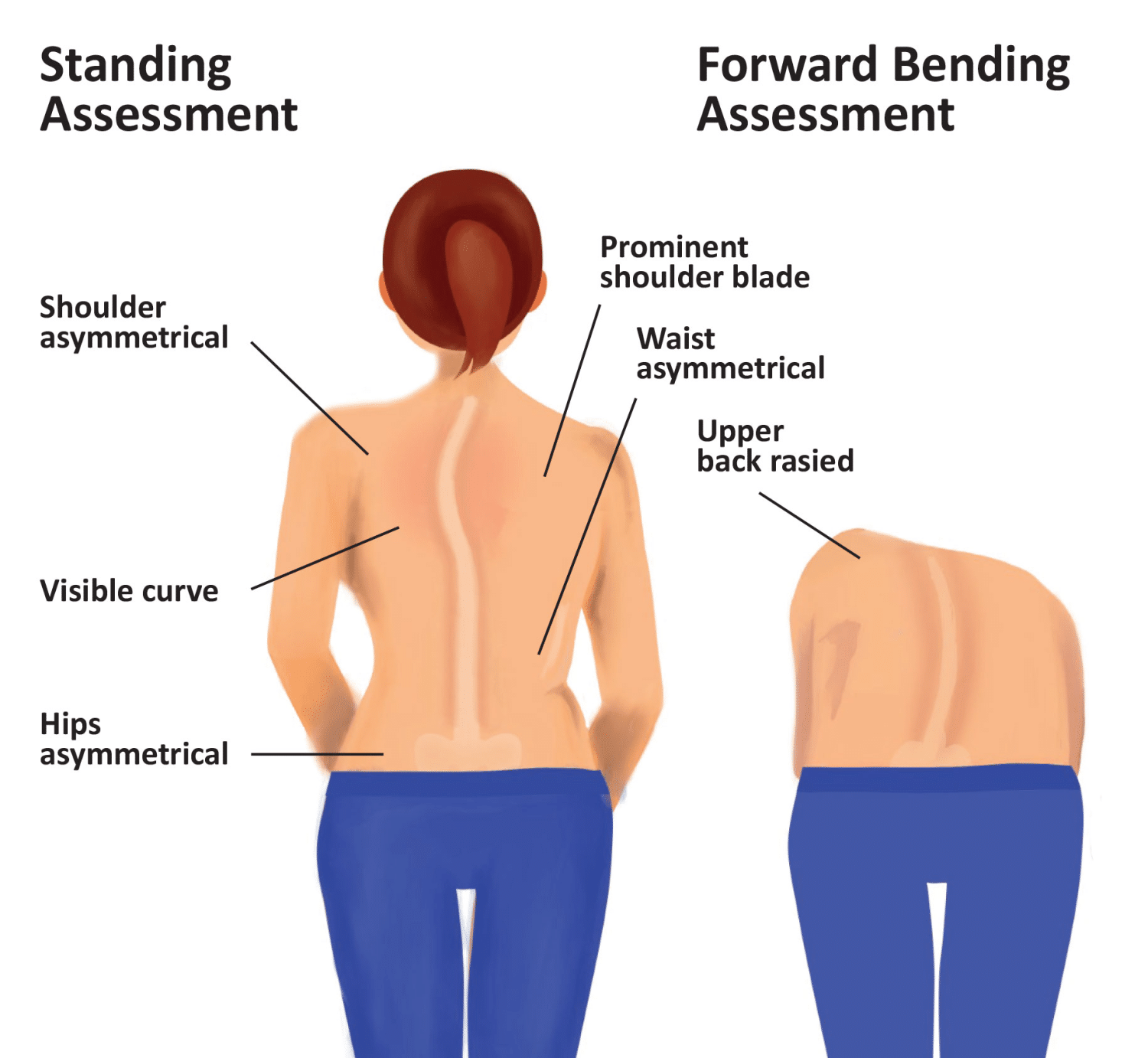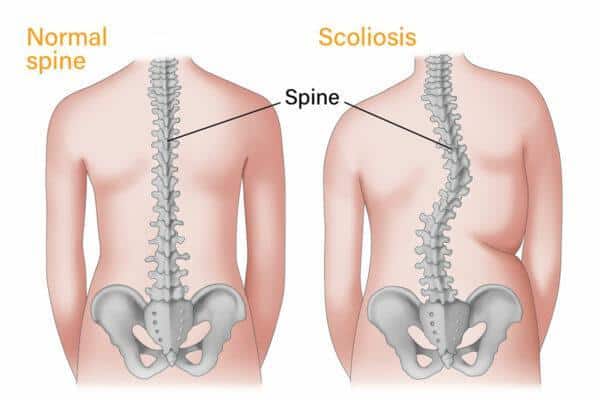Have you ever noticed one of your hips sits higher? Or one shoulder seem elevated? Or perhaps a crease or fold in your waist that you do not notice on the other side? You may have a common condition called scoliosis. In most cases, this does not cause any major issues, but it can lead to back and hip pain, pain with activity, and difficulty breathing.
What is Scoliosis?
Scoliosis is a curvature of the spine. It can be a curvature in any direction, meaning the spine can be rotated right or left or curved to the left or right sides. Many people have a very small degree of scoliosis they are born with or develop early in life, after all we are not perfectly symmetrical. Some people develop scoliosis after trauma (fractures, soft tissue injuries) or later in life especially if they have osteoporosis. It often presents during adolescence and can be progressive, meaning it gets worse as the individual grows. Once the individual is finished growing, the scoliosis typically stops progressing.
Scoliosis can be either structural (bone deformities or changes that are visible on imaging) or functional (tight or injured muscles, postural imbalances). Depending on the type of scoliosis, will affect recovery and treatment.
Progression of Scoliosis
As mentioned above, typically scoliosis is not painful and does not cause major issues, but if it is progressive and the curve is increasing as the individual grows, issues can arise. It can lead to trouble breathing, nerve impingement which can cause numbness, burning, and tingling in the extremities, and back and hip pain. Sometimes the curvature become so extreme that the bottom rib can touch the hip bone which can cause significant pain and dysfunction. In adolescence, the fitting of back braces or sometimes surgery can help alleviate pain and compression of vital structures.
What causes Scoliosis
Most cases of scoliosis occur for no reason. It is more common in adolescent girls age 8-17. Some cases of scoliosis are due to congenital abnormalities, neurological conditions, or other systemic diseases.
*Early detection of scoliosis is very important for prevention and treatment*
Treatments for Scoloiosis
Bracing
Depending on the severity of the curvature, an orthopedic surgeon or specialist may prescribe a brace to be worn nearly 24/7 to help slow down or stop the progression of the curvature

Physiotherapy
Physiotherapy will help determine the type of curvature and can help monitor for progression. Your physiotherapist will provide you with stretching and strengthening exercises to help address muscle imbalances and postural issues. Manual therapy is also an important part of treatment for this and can help correct the curvature depending on the cause.
Surgery
If conservative treatment does not help with the progression of scoliosis, surgery may be beneficial. Surgery typically involves fusion of certain bones to stop the progression of curving and irritation to any structures the curvature may be causing.
How can I tell if I have scoliosis?
If you answer yes to any of these questions, it is possible you have scoliosis and you would benefit from a physiotherapy assessment:
1. Do you have one leg longer than the other?
2. Is one shoulder sitting much higher than the other:
3. Is one hip sitting higher than the other when standing:
4. With your arms by your side, is one hand sitting farther out from your side or further down your leg than the other hand?
5. When you bend forward, does one side of your rib cage stick out further than the other?
6. Do you find it uncomfortable to take deep breaths?
7. Do you find you can twist much further one way versus the other?
8. Does your back tilt to one side?


